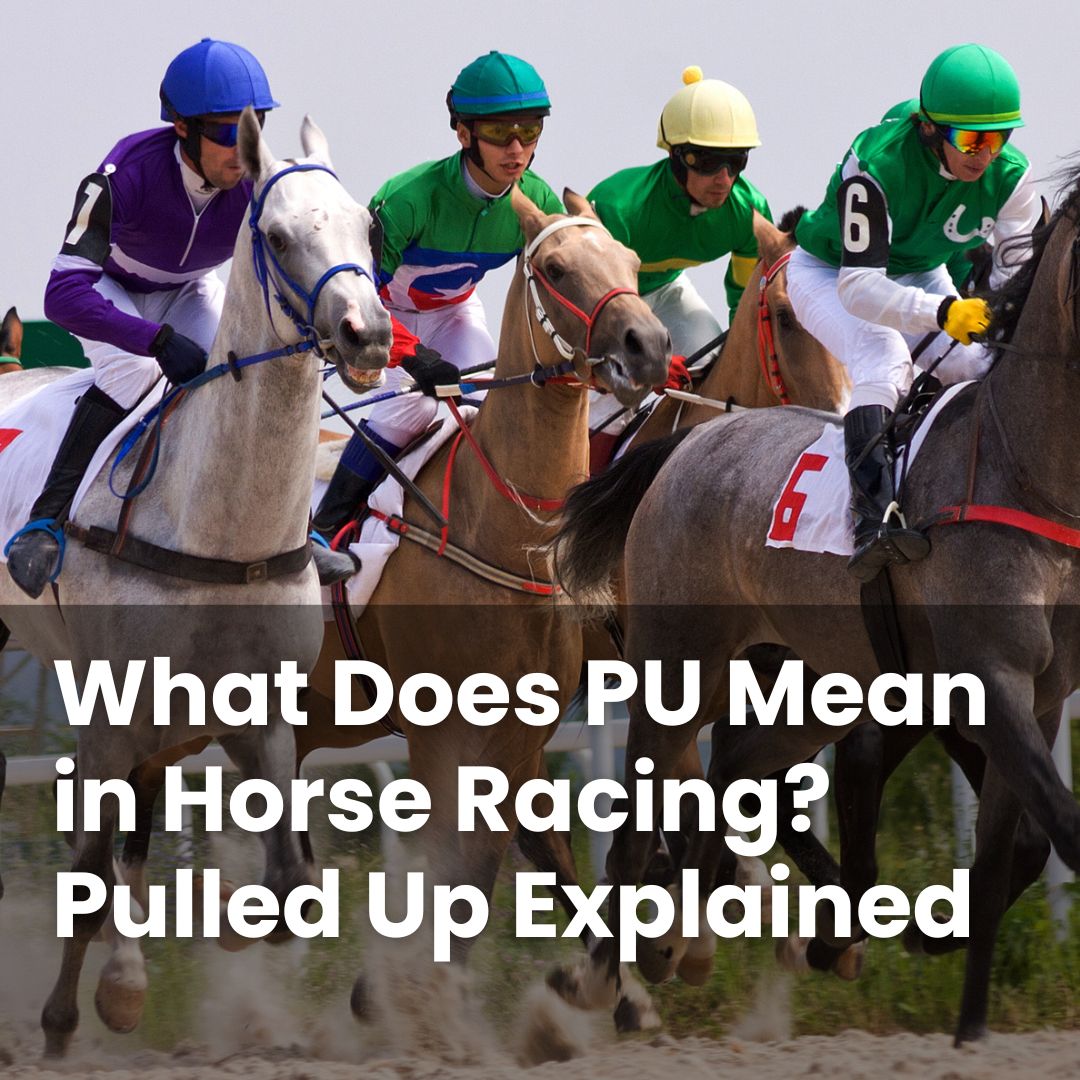Horse racing features a variety of terms and abbreviations that may seem unfamiliar. One you might notice on a racecard or result sheet is “PU”.
This abbreviation appears in many races across different betting platforms. Whether you’re browsing form guides or checking results, “PU” is a regular part of horse racing language.
So, what does “PU” stand for, and how might it affect your view of a horse’s past performance? Here’s what you need to know.
What Does Pulled Up Mean in Horse Racing?
In horse racing, “pulled up” refers to a situation where a jockey decides to stop the horse before it completes the race. This decision is often made for welfare reasons, such as when the horse shows signs of discomfort, fatigue, or other issues.
When a horse is pulled up, it does not cross the finish line. It steps out of the race before the end. In form figures, this is usually shown as “P”, while in full race results, you’ll see “PU”.
This is different from incidents where a horse might fall, unseat the rider, or be brought down. Pulling up is a deliberate action based on what the jockey observes during the race.
Why Might a Horse Be Pulled Up During a Race?
There are several reasons a horse might be pulled up during a race. These can include:
- Irregular movement or signs of lameness.
- Extreme fatigue, particularly in longer races or on testing ground.
- Tack problems, such as a slipping saddle.
- Medical concerns, such as breathing difficulty.
The decision is based on what the jockey sees and feels. Their experience with the horse helps them decide when it is best to ease out of the race. Pulled-up entries are part of the sport and can happen across both jump and flat racing.
Is Being Pulled Up the Same as Not Finishing?
Being pulled up is one way a horse may not finish a race. There are other outcomes too. These are recorded using standard abbreviations in UK race results.
For example:
- “F” stands for a fall.
- “UR” means the jockey was unseated.
- “BD” means the horse was brought down.
- “R” shows the horse refused to race.
- “O” means the horse ran out.
Each abbreviation gives a short explanation of what occurred. Understanding these helps when reviewing a race result or studying a horse’s recent form.
Can You Still Win a Bet If a Horse Is Pulled Up?
If the horse you’ve backed is pulled up, it’s considered a non-finisher. For standard win and each-way bets, the horse needs to complete the race. A pulled-up horse is not included in the final result.
This also applies to forecast and tricast bets, where the finishing order matters. A pulled-up runner will not qualify for these outcomes.
In some cases, individual bookmakers may offer promotions that cover pulled-up horses. These would be clearly listed in their promotional terms. It might be a good idea to check the terms on the bookmaker’s site before placing a bet.
Do You Get Your Money Back From a Pulled Up Bet?
If a horse is pulled up after the start of the race, the stake is usually lost. The horse is treated as a non-finisher under standard rules used by most UK bookmakers.
Refunds generally apply to horses that are declared non-runners before the start. However, some bookmakers may run offers that include a refund if a horse fails to finish. These promotions vary by event and operator.
You can review the terms attached to any offer on the bookmaker’s website. It might be helpful to read these before placing a bet, particularly if you’re following a horse with previous non-completions.




